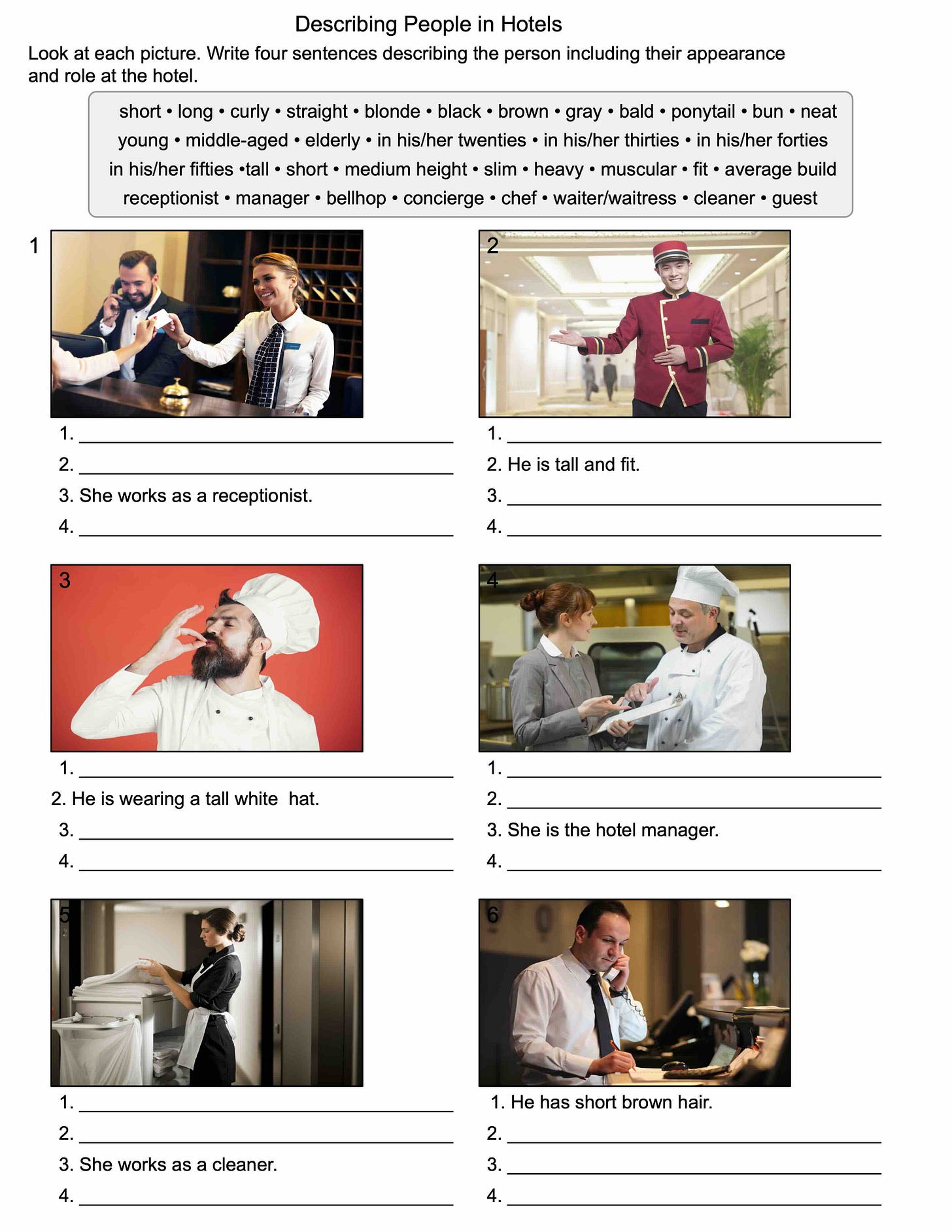The Micro-Scenario Approach: AI Tools for Hyper-Specific Language Teaching
Focusing on describing appearance
AI enables the creation of hyper-specific language learning materials. As a teacher, you can now be a designer and director of this AI-assisted process, creating personalized lessons that traditional textbooks simply cannot match.
For example, you can choose one aspect of the topic "describing appearance" such as age and use carefully designed templates based on teaching expertise and classroom experience to create a set of activities that explores age-related language uses, such as listening and matching exercises, collocation practice, and critical thinking exercises.
Or, you can choose a class of workers, such as "office workers", and use your AI templates to create a parallel set of exercises. Another example might be a specific workplace scenario, such as a "hotel", where these AI templates enable industry-specific materials teaching commonly used terminology like "neat hair" and "professional posture" that aligns with actual hospitality standards.
This teacher-directed, precision-focused approach allows your language learners to master vocabulary and expressions they'll actually use in their specific contexts, rather than memorizing generic language that might never prove relevant to their needs.
Today’s Contents
Describing People: Age
Listening and Pictures
Collocations
Critical Thinking
Describing Hotel Staff and Guests Appearance
Listening and Pictures
Collocations
Critical Thinking
Describing Office Workers Appearance
Listening and Pictures
Collocations
Critical Thinking
Paid subscribers have access to download the complete materials at the end of the post.
Describing Appearance - Age
Close your eyes for a moment and imagine walking into a crowded room. How would you describe the people you see to someone who isn't there? Age is one of the first characteristics we notice—yet finding the right words to express these observations can be challenging in a new language. This set features three complementary types of activities: listening and picture-based descriptions where students describe people of different ages, collocation exercises that teach proper word pairings like "middle-aged" and "retirement age," and appearance analysis or critical thinking activities that encourage students to identify age indicators and learn culturally appropriate ways to discuss age in English.
Describing Staff and Guests Appearance- Hotels
Hotel workers need to understand appearance expectations clearly. This material teaches students the exact words that describe how hotel staff should look and dress. Learning collocations like "neat hair," "professional posture," and "clean uniform" helps students understand workplace requirements they'll face in real hotels. Students also practice how to speak politely about appearance issues with guests - a challenging but necessary skill in hospitality work. The words and phrases taught here appear frequently in job descriptions, workplace policies, and performance reviews across the hospitality industry worldwide.
Describing Office Workers Appearance
When working in an office, knowing how to describe people correctly is important. Through listening exercises where you identify appropriate workplace attire, collocation practice that pairs words like "business" with "casual," and critical thinking activities about cultural differences in dress codes, you develop communication skills that demonstrate cultural sensitivity. By mastering these language patterns through practical exercises, you build the soft skills needed for effective teamwork across diverse workplaces, where describing appearance respectfully enhances your professional reputation.



